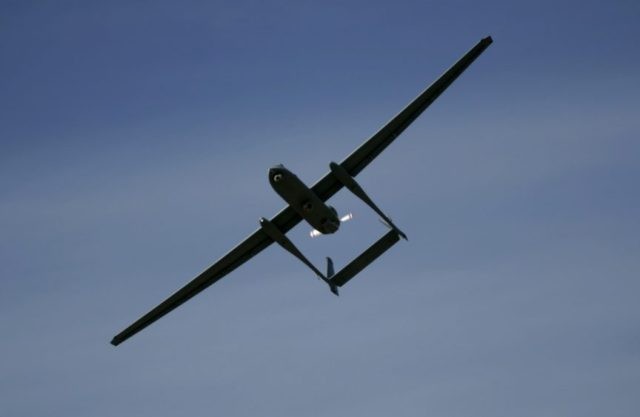Outdated federal laws are hindering U.S. efforts to confront the “very serious, looming” and “quickly evolving” threat posed by drones in the hands of terrorists, American government officials warned lawmakers on Wednesday.
Terrorists can potentially use the unmanned aircraft systems (UAS) to carry out various malicious acts in the United States ranging from chemical and radiological attacks to cyber assaults, the officials noted.
In joint written testimony prepared for a Senate Homeland Security and Governmental Affairs Committee hearing on legislation to mitigate the threat posed by drones in the hands of criminals and terrorists, David Glawe, the undersecretary for intelligence and analysis at the U.S. Department of Homeland Security (DHS) and Hayley Chang, the department’s deputy general counsel, cautioned lawmakers:
We have already seen transnational criminal actors adopt UAS technology to move drugs across the border. Terrorist groups overseas use drones to conduct attacks on the battlefield and continue to plot to use them in terrorist attacks elsewhere. This is a very serious, looming threat that we are currently unprepared to confront. Today we are unable to effectively counter malicious use of drones because we are hampered by federal laws enacted years before UAS technology was available for commercial and consumer use. Public access to these systems, with their current operational capacity and range, were not even conceived of when these laws were adopted.
Scott Brunner, the deputy assistant director for the FBI’s Critical Incident Response Group (CIRG), added in his written testimony:
At present, the FBI and our Federal partners have very limited authority to counter this new threat. Potential conflicts in Federal criminal law limit the use of technologies that would enable the FBI to detect or, if necessary, to mitigate UAS that threaten critical facilities and assets. Absent legislative action, the FBI is unable to effectively protect the U.S. from this growing threat.
The DHS and FBI officials noted that the evolving drone threat comes in various shapes, forms, and sizes, with Brunner further explaining:
The UAS threat could take a number of forms, including illicit surveillance, chemical/biological/radiological attacks, traditional kinetic attacks on large open air venues (concerts, ceremonies, and sporting events), or attacks against government facilities, installations and personnel. Sadly, these threats are not merely hypothetical.
For more than two years, the Islamic State of Iraq and ash-Sham (ISIS) has used cheap, commercially available drones to conduct attacks and reconnaissance in Syria and Iraq. As Director [Christopher] Wray testified last year, the FBI is concerned that these deadly tactics—perfected overseas—will be performed in the homeland. That threat could manifest itself imminently.
Glawe and Chang noted that terrorists are looking for ways to “increase the payload capabilities of UAS for a variety of reasons, which presents a growing challenge of scale in mitigating the immediate effects of potential threats.”
Latin American drug cartels — currently behind the influx of the heroin and the synthetic opioid fentanyl responsible for the unprecedented number of fatal drug overdoses in the U.S. — are increasingly using drones to smuggle more narcotics across the southern border, conduct illicit surveillance, avoid U.S. law enforcement, and interfere with ongoing law enforcement operations, the DHS and FBI officials acknowledged.
Glawe and Chang testified that the drone threat goes beyond smuggling narcotics and carrying out terrorist attacks, into the cyber realm, warning:
Malicious actors could utilize UASs in order to wirelessly exploit access points and unsecured networks and devices. This can include using UASs to inject malware, execute malicious code, and perform man-in-the-middle attacks. UASs can also deliver hardware for exploiting unsecured wireless systems.
…
Malicious actors could also exploit vulnerabilities within UAS and UAS supply chains to compromise UAS belonging to critical infrastructure operators and disrupt or interfere with legitimate UAS operations.
Echoing Brunner, the DHS officials urged Congress to adopt the Preventing Emerging Threats Act of 2018, arguing that it will provide federal law enforcement with much-needed authority and relief from outdated laws, all necessary to combat the national security and criminal threats posed by UAS, mainly small drones.
Currently, the federal government lacks the authority to mitigate the drone threat and is seeking relief from outdated federal statutes to ensure law enforcement is not criminally liable for using the most effective technology to counter the threat posed by UAS, the U.S. officials argued.
In a rare show of bipartisanship, the Preventing Emerging Threats Act of 2018, introduced in mid-May, is backed by members from both parties, including Sen. Claire McCaskill of Missouri, the top Democrat on the Senate panel that hosted the hearing.

COMMENTS
Please let us know if you're having issues with commenting.